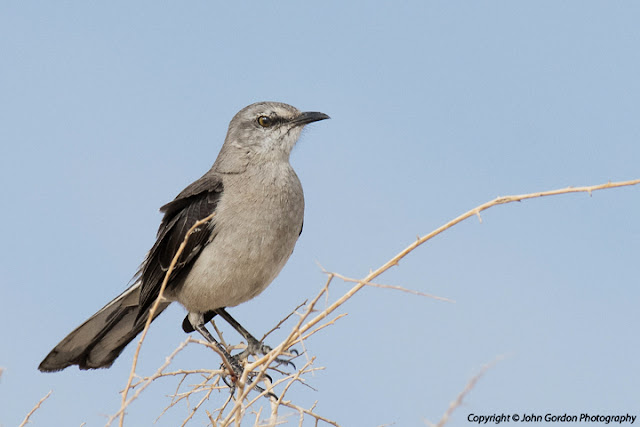May Birding in the Lower Mainland
Springtime was a long time coming to the Lower Mainland. Many of the winter species were still hanging on and new arrivals were slow to show up. Many remarked on how quiet it was in the forests and foreshore. Eventually warmer weather prevailed and a change of season was underway. First were the yellow-rumped Warblers and the Townsend's Solitaires. Then in May there was some real movement including some really good birds and a few surprises.
 |
| Pacific-slope Flycatcher Semiahmoo Fish and Game Club |
Here are some of the birds of early May including the location and dates as recorded by eBird.
 |
| Canvasback Iona south Jetty. I was drawn female Canvasback and the calm water, I thought it created an interesting reflection. This bird was a distant speck but enlarged nicely. |
To keep a record of sightings I have been using eBird. The app allows you from the comfort of your chair to plan what where and when to bird.
The #154 denotes the 154th Metro Vancouver species I have spotted in 2018 and so on. Last year I hobbled together 217 species in Metro Vancouver and hope to surpass that number this season. Ticking birds isn't for everyone but if a person has the time, why not.
Want to know more about what birders get up to read this
The difference between bird watching and birding
Want to know more about what birders get up to read this
The difference between bird watching and birding
Sightings cont.
154. Red-breasted Sapsucker Burnaby Mountain CA-BC 01 May 2018
155. Townsend's Warbler Burnaby Mountain CA-BC 01 May 2018
156. Western Tanager Burnaby Mountain CA-BC 01 May 2018
157. Semipalmated Plover Boundary Bay - 104th St., Delta CA-BC 02 May 2018
158. Western Sandpiper Boundary Bay - 104th St., Delta CA-BC 02 May 2018
159. Pacific-slope Flycatcher Semiahmoo Fish and Game Club CA-BC 02 May 2018
160. Sage Thrasher (Below) 21471–21599 Koener Rd, Pitt Meadows CA-BC (49.3154,-122.6214) CA-BC 03 May 2018
161. Blue-winged Teal Iona Island inner ponds CA-BC 07 May 2018
162. Least Sandpiper Iona Island inner ponds CA-BC 07 May 2018
163. Spotted Sandpiper Iona Island inner ponds CA-BC 07 May 2018
164. Hudsonian Godwit Reifel Bird Sanctuary CA-BC 07 May 2018
165. Barred Owl Reifel Bird Sanctuary CA-BC 07 May 2018
166. Black-throated Gray Warbler Riding ring Brown Park CA-BC 07 May 2018
168. Black-headed Grosbeak Brydon Lagoon Langley CA-BC 08 May 2018
170. Western Wood-Pewee Colony Farm CA-BC 09 May 2018
171. Yellow Warbler Colony Farm CA-BC 09 May 2018
172. Lesser Yellowlegs Blackie Spit (Incl. Dunsmuir Farm & Nicomekl estuary) CA-BC 11 May 2018
173. Caspian Tern Blackie Spit (Incl. Dunsmuir Farm & Nicomekl estuary) CA-BC 11 May 2018
Finding good birds is a mixture of many factors. The more I bird the more I realize how little I actually really know and how much I have to learn. Birding is a great excuse to get out and exercise, travel and socialize with other like minded individuals. One afternoon I walked a few kms with a birding expert and had the best conversation about our grand children and of course such trivial things the meaning of life.
Birds/Meaning of Life
Birds/Meaning of Life
****
174. Purple Martin Blackie Spit (Incl. Dunsmuir Farm & Nicomekl estuary) CA-BC 11 May 2018
175. Lapland Longspur Iona Island--South Jetty CA-BC 14 May 2018
176. Pectoral Sandpiper Iona Island inner ponds CA-BC 14 May 2018
177. Semipalmated Sandpiper Iona Island inner ponds CA-BC 14 May 2018
178. American Pipit Iona Island inner ponds CA-BC 14 May 2018
179. Pacific Golden-Plover Boundary Bay - 96th St., Delta CA-BC 14 May 2018
180. Wilson's Phalarope Boundary Bay 96-88 St. (mansion), Delta CA-BC 14 May 2018
181. Bullock's Oriole Brunswick Point, Delta CA-BC 15 May 2018
 |
| Male Bullock's Oriole Brunswick Point As I watched the male female Bullock's flew in with nesting material. I visited a few days later and there was no sign of either birds. |
182. Hammond's Flycatcher West Vancouver-Eagle Lake Road CA-BC 16 May 2018
 |
| Hammond's Flycatcher Cypress Mountain |
 |
| Warbling Vireo Cypress Mountain |
184. Warbling Vireo West Vancouver-Eagle Lake Road CA-BC 16 May 2018
185. Sooty Grouse Cypress Provincial Park Road CA-BC 16 May 2018
186. MacGillivray's Warbler Cypress Provincial Park Road CA-BC 16 May 2018
 |
| Cinnamon Teal Reifel Migratory Bird Sanctuary |
Horrible midday light again but a BC lifer so again a decent ID shot and record shot. The background is the Iona sewage ponds where many birders find themselves over and over again despite the odours.
 |
| Common Grackle Iona Inner Ponds |
187. Evening Grosbeak Cypress Provincial Park CA-BC 16 May 2018
188. Common Grackle Iona Island inner ponds CA-BC 16 May 2018
 |
| Dark-eyed Junco fledgling begging for food Crescent Park. |
189. Swainson's Thrush Crescent Park, Surrey CA-BC 17 May 2018
 |
| Swainson's Thrush Crescent Park |
 |
| California Scrub Jay Maple Ridge |
Another easy bird was the California Scrub Jay in Maple Ridge. I actually heard the bird(s) before I saw it. I exited my car and before I could get a good view a neighbour came over and told me they may be nesting in her roof. She'll keep me updated if indeed there are young.
190. California Scrub-Jay Dover St Maple Ride CA-BC 18 May 2018











































